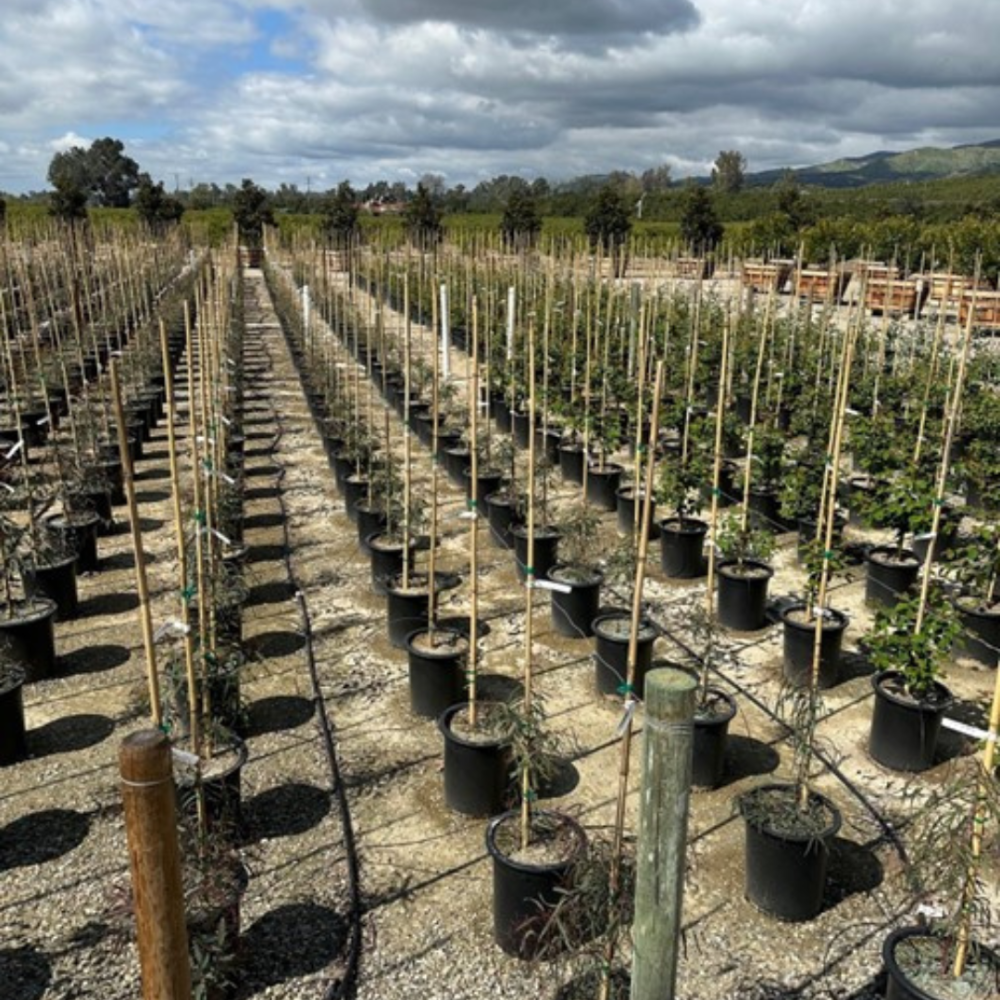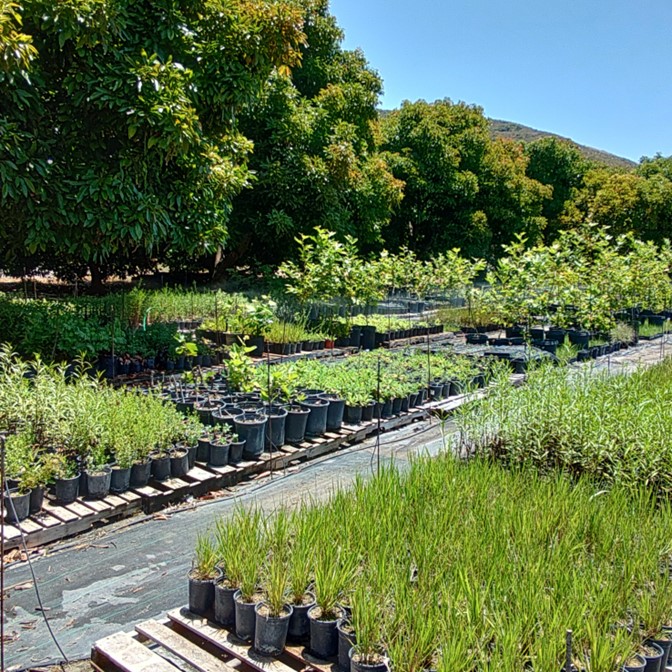
The popular Goleta Butterfly Grove at Ellwood Mesa is undergoing a transformation to help monarch butterflies. Since late this spring, a collection of City, California state agencies, and private contractors have been removing dead trees and highly flammable vegetation to reduce the risk of catastrophic fire. That work is continuing, and the community will also begin to see thousands of young trees and native plants delivered to the site for planting later this summer and fall.
George Thomson, Goleta’s Parks and Open Space Manager, provides more detail on the efforts, “Now that permits have been issued by the California Coastal Commission, we’ve removed hundreds of dead trees and cleared acres of dead brush from the Goleta Butterfly Grove. This is the first step towards a multi-year replanting effort that will see over 1200 new eucalyptus, 800 native trees, and several thousand flowering shrubs and wetland plants installed at the site. The City is also installing irrigation, removing invasive weeds, and ensuring wetlands and nesting birds are protected throughout this effort.”
Visitors to Ellwood Mesa will notice several major changes, with more to come in the following weeks:
- The main butterfly view is noticeably different with fewer dead trees and much of the dead brush in the forest understory cleared out. This is the area where replanting will occur first.
- Trail improvements will be added, including new wood chips and reroutes where old trails were too steep.
- Temporary irrigation systems will be installed – aboveground white pipes will be noticeable as water is delivered to the new trees and native plants.
- Onsite plant nurseries and staging areas are being set up – fenced areas securing thousands of new trees and young plants in small pots will be established. These areas are temporary and help support the replanting effort.
- Informational signage and temporary trail closure detours will help inform visitors about volunteer opportunities.
Dr. Lisa Stratton, Director of Ecosystem Management for UC Santa Barbara Cheadle Center, is helping coordinate the planting project. She said, “As soon as the big tree work is done and the irrigation lines are established we will begin planting trees to support the sites where monarchs are known to aggregate. We will also enhance the surrounding riparian areas to improve wind protection and temperature moderation. Later in the fall we will plant flowering shrubs to provide nectar for monarchs as they prepare for their spring migration away from Ellwood. The Cheadle Center is recruiting UCSB students and community volunteers to work with us on this exciting restoration opportunity and we invite you to be part of this community effort.”
We invite you to join us!
- UC Santa Barbara’s Cheadle Center will organize ongoing volunteer work days. For information sign up or email Ethan Anadon, ethan_anadon@ucsb.edu.
- Your Children’s Trees will lead tree planting and tree care events Saturday mornings 8:15 a.m. to noon, August 3 through September 14. Contact Ken Knight, Certified Master Arborist at (805) 699-0088.
- Ellwood Friends is an informal community group for those with shared interests in Ellwood, including the stewardship, conservation and celebration of Ellwood Mesa. Sign up for events and updates at ellwoodfriends.org.
Stay Informed and Keep in Touch
- Visit the CityofGoleta.org/Ellwood-now for weekly updates on active work areas, upcoming events and other information.
- Visit CityofGoleta.org/Ellwood for background information on the restoration project.
- Contact the Parks and Open Space Division at ellwoodmesa@cityofgoleta.org if you have questions or concerns.
Funding for the implementation of the Monarch Butterfly Habitat Management Plan is provided by the California State Coastal Conservancy. The Coastal Conservancy is a California state agency, established in 1976, to protect and improve natural lands and waterways, to help people get to and enjoy the outdoors, and to sustain local economies along California’s coast. It acts with others to protect and restore, and increase public access to, California’s coast, ocean, coastal watersheds, and the San Francisco Bay Area. Its vision is of a beautiful, restored, and accessible coast for current and future generations of Californians.
Funding for fire prevention activities in and near Ellwood Mesa (Ellwood Mesa Neighborhoods Hazard Fuel Reduction) is part of California Climate Investments, a statewide program that puts billions of Cap-and-Trade dollars to work reducing GHG emissions, strengthening the economy, and improving public health and the environment– particularly in disadvantaged communities. The Cap-and-Trade program also creates a financial incentive for industries to invest in clean technologies and develop innovative ways to reduce pollution. California Climate Investments projects include affordable housing, renewable energy, public transportation, zero-emission vehicles, environmental restoration, more sustainable agriculture, recycling, and much more. At least 35 percent of these investments are located within and benefiting residents of disadvantaged communities, low-income communities, and low-income households across California. For more information, visit the California Climate Investments website at: www.caclimateinvestments.ca.gov.
Pictured above: More than 1,200 young eucalyptus trees are being grown at an offsite facility for the Goleta Butterfly Grove project. These trees will be planted at Ellwood Mesa to help restore monarch butterfly habitat.

Over 6,500 native plants will soon be delivered to Ellwood Mesa as a massive habitat enhancement effort gets underway to increase biodiversity and provide nectar for migrating monarch butterflies.




